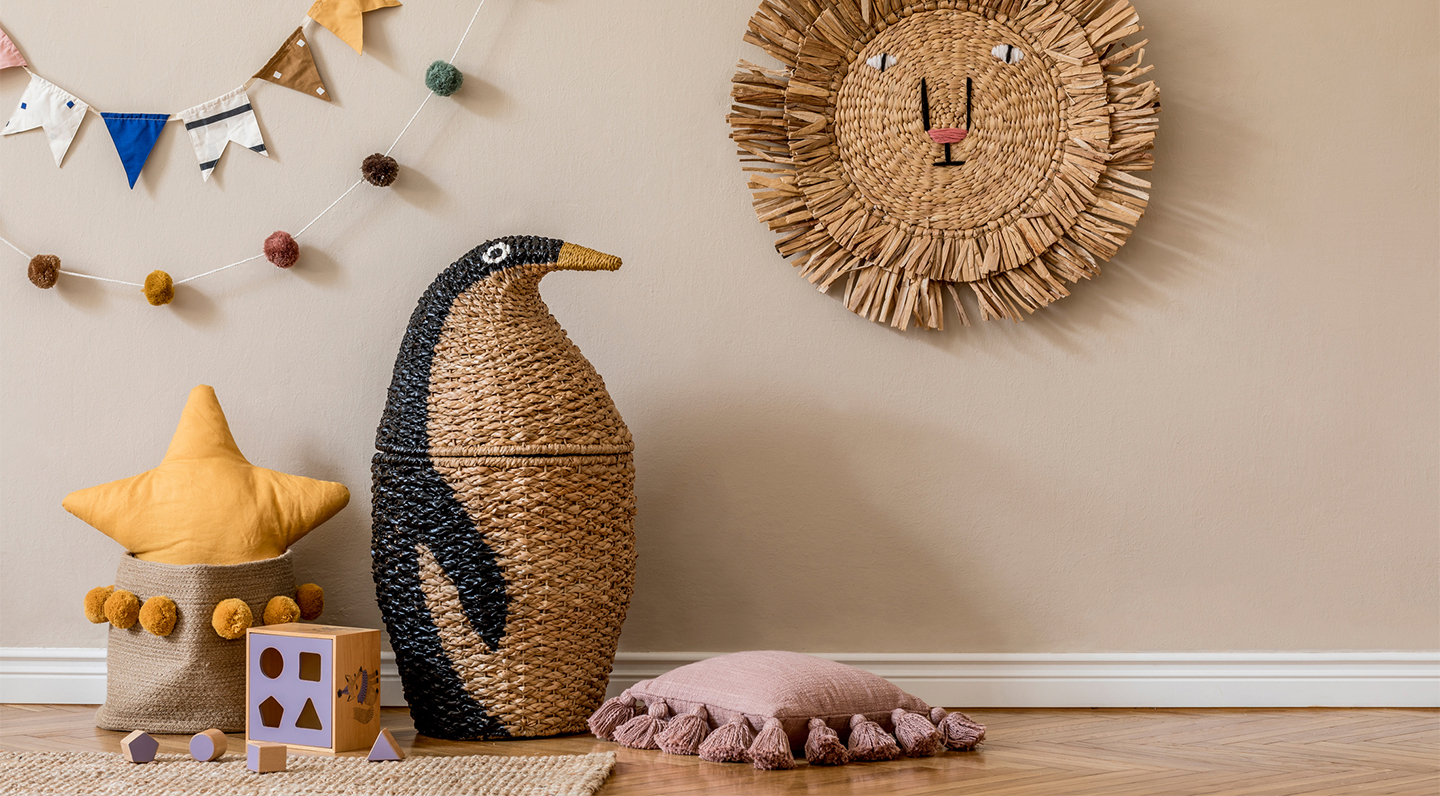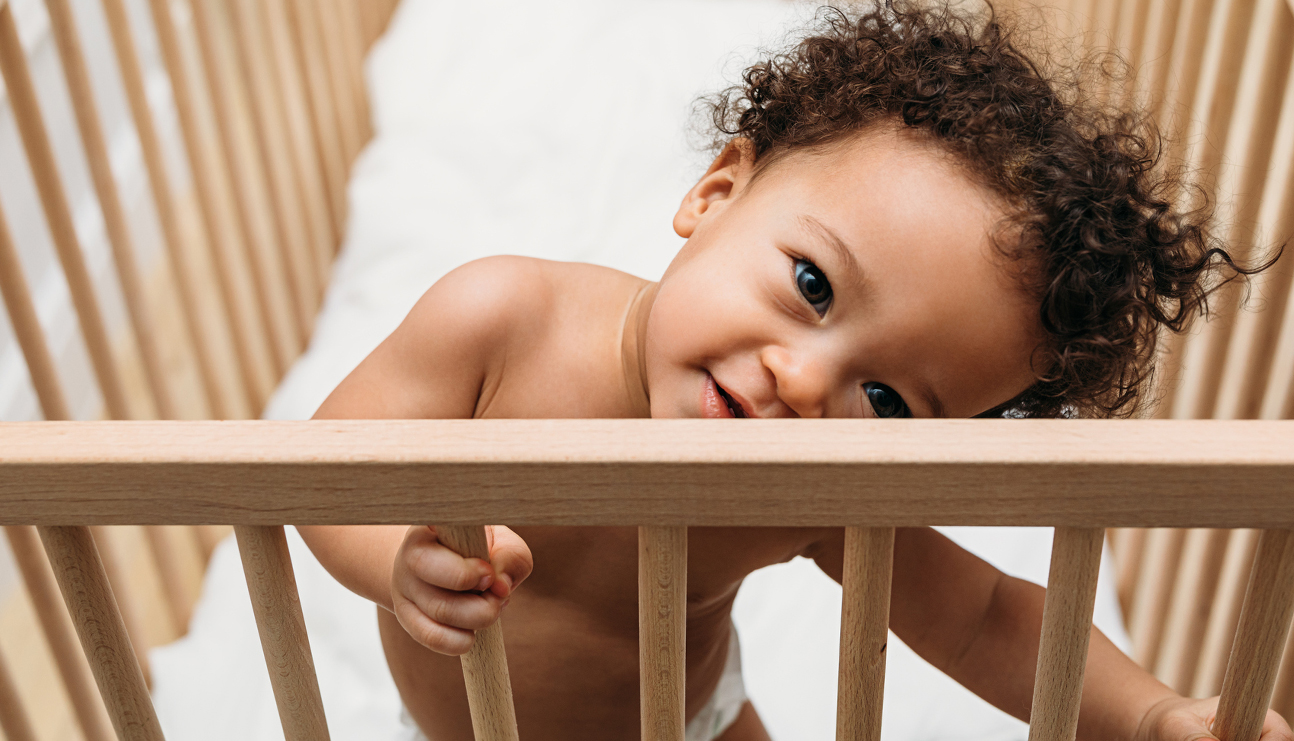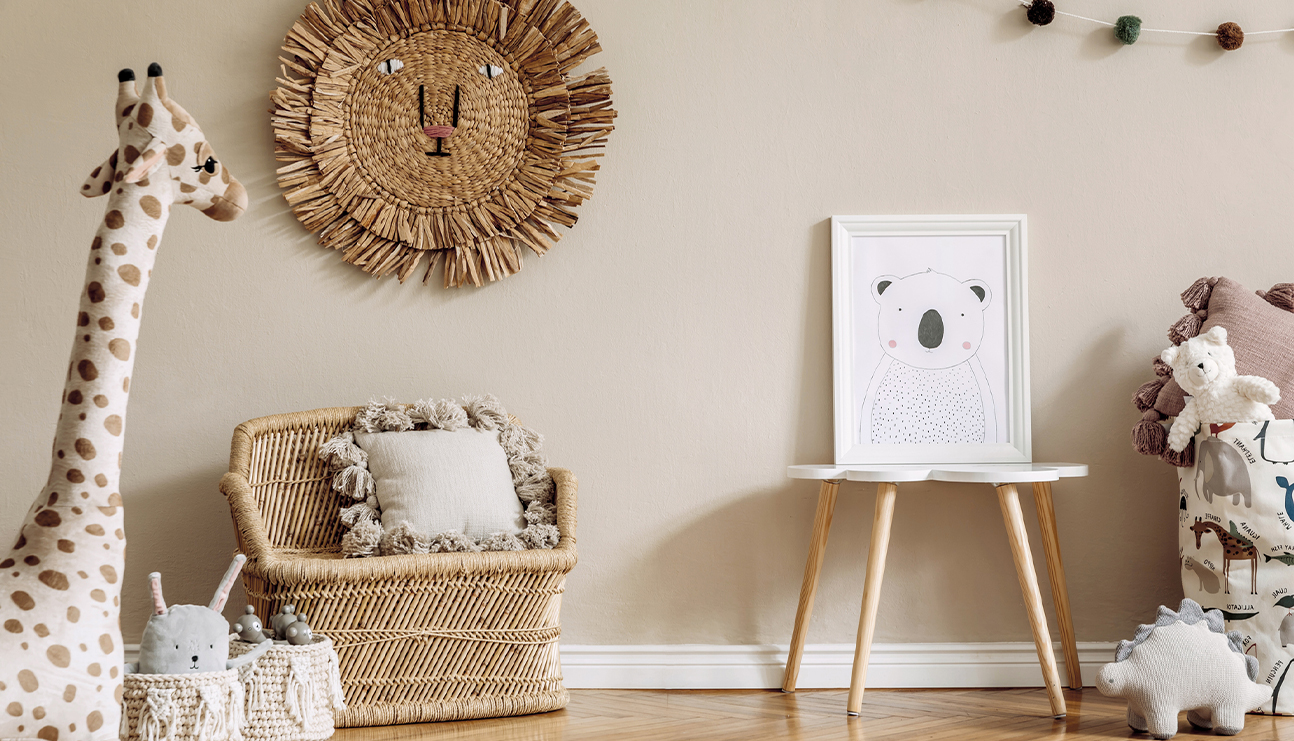6 Chemicals to Avoid for a Non-Toxic Nursery
Denise Vasi
The nesting instinct comes on strong for new mamas in the months and weeks leading up to birth. For me, nesting wasn’t just about cleaning and organizing, but also making sure that everything in the nursery is non-toxic, free of VOCs, and as green as possible.
Take a deeper look at what’s in conventional baby gear and you’ll be shocked to find that we lay our babies to sleep on mattresses that have been doused with toxic flame retardants and let them chew on teethers made with known endocrine-disruptors. Infants are particularly susceptible to the effects of these chemicals and, because many of them build up in the body over time, it’s especially important to put together a safe, toxin-free nursery.


Let’s Talk About Chemicals to Avoid in a Nursery
Is it possible to keep every possible harmful chemical away from your baby? Of course not. Can we do better than conventional baby products? Absolutely. Instead of falling into the trap of an all-or-nothing approach—which can cause anxiety when you fall short—focus on doing what you can to minimize exposures to problematic chemicals.
These are the toxins to avoid in baby furniture, gear, and toys:
Flame Retardants
I’ve recently shared an in-depth article about why flame retardants should be avoided. I won’t reiterate those points here, but you should know that these chemicals are in so many of the items we use for babies, from their pajamas to their car seats. Mainstream science agrees that they should not be used in children’s items, yet government regulations have not caught up to the latest research.
Polyvinyl Chloride (PVC)
PVC is another chemical that’s everywhere—and especially so in inexpensive toys for babies and children. PVC is the most toxic plastic on the market, often containing lead and phthalates, and releasing VOCs into your home. PVC has been linked to cancer, premature puberty, and other endocrine and reproductive disorders.
Volatile Organic Compounds (VOCs)
The “new” smells of traditional nursery furniture, carseats, and paints are all thanks to VOCs. In the short term, VOCs can cause headaches, irritation to the eyes, nose, and throat, and nausea; they’ve also been linked to kidney and liver damage and cancer.


Is it possible to keep every possible harmful chemical away from your baby? Of course not. Can we do better than conventional baby products? Absolutely.
Bisphenol A (BPA) and Phthalates
These are chemicals used in plastics that are associated with behavioral problems and endocrine disruption. Although most manufacturers have phased out BPA as a result of consumer outcry, phthalates are still widely used.
Formaldehyde
According to the American Academy of Pediatrics, even very low levels of formaldehyde can cause irritation and burning in the eyes, nose, throat, and skin; it’s also known as a probable human carcinogen. Formaldehyde is commonly used in inexpensive furniture made with pressed wood.
Per- and Polyfluorinated Chemicals (PFAS)
PFAS are particularly prevalent in carpeting; as the carpet degrades, the PFAS turn into dust that babies and children ingest by touching the floor and then sucking on their fingers or chewing on toys that were on the carpet. PFAS are linked to impaired neurodevelopment, immune system dysfunction, hormone disruption, and cancer.
Putting Together Your Non-Toxic Nursery
If all of this information feels daunting, take a deep breath. It’s easier than ever to put together a toxin-free bedroom for your little one. Here are some of my favorite greener, healthier alternatives to traditional baby gear and nursery decor.






